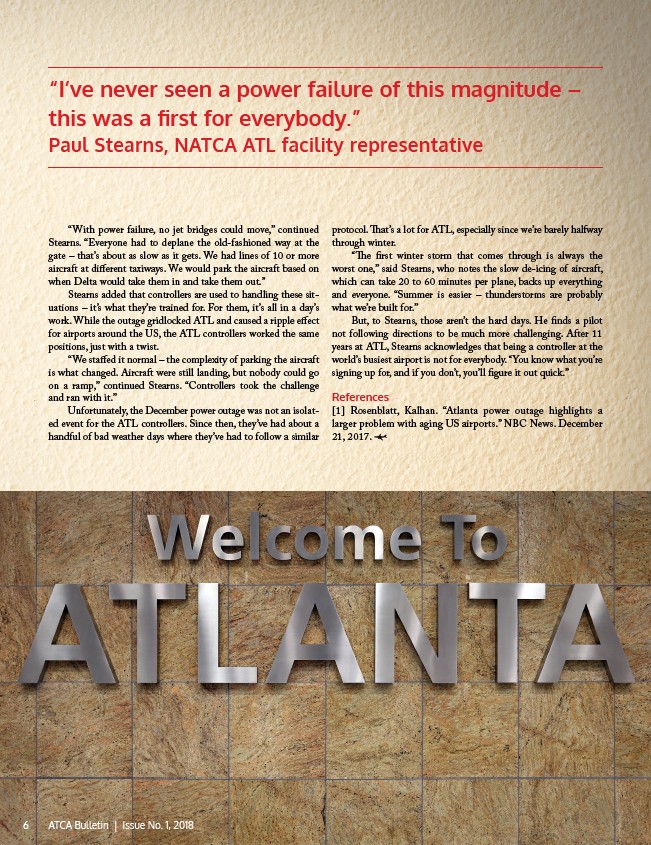
“I’ve never seen a power failure of this magnitude –
this was a first for everybody.”
Paul Stearns, NATCA ATL facility representative
“With power failure, no jet bridges could move,” continued
Stearns. “Everyone had to deplane the old-fashioned way at the
gate – that’s about as slow as it gets. We had lines of 10 or more
aircraft at different taxiways. We would park the aircraft based on
when Delta would take them in and take them out.”
Stearns added that controllers are used to handling these sit-uations
– it’s what they’re trained for. For them, it’s all in a day’s
work. While the outage gridlocked ATL and caused a ripple effect
for airports around the US, the ATL controllers worked the same
positions, just with a twist.
“We staffed it normal – the complexity of parking the aircraft
is what changed. Aircraft were still landing, but nobody could go
on a ramp,” continued Stearns. “Controllers took the challenge
and ran with it.”
Unfortunately, the December power outage was not an isolat-ed
event for the ATL controllers. Since then, they’ve had about a
handful of bad weather days where they’ve had to follow a similar
protocol. That’s a lot for ATL, especially since we’re barely halfway
through winter.
“The first winter storm that comes through is always the
worst one,” said Stearns, who notes the slow de-icing of aircraft,
which can take 20 to 60 minutes per plane, backs up everything
and everyone. “Summer is easier – thunderstorms are probably
what we’re built for.”
But, to Stearns, those aren’t the hard days. He finds a pilot
not following directions to be much more challenging. After 11
years at ATL, Stearns acknowledges that being a controller at the
world’s busiest airport is not for everybody. “You know what you’re
signing up for, and if you don’t, you’ll figure it out quick.”
References
1 Rosenblatt, Kalhan. “Atlanta power outage highlights a
larger problem with aging US airports.” NBC News. December
21, 2017.
6 ATCA Bulletin | Issue No. 1, 2018